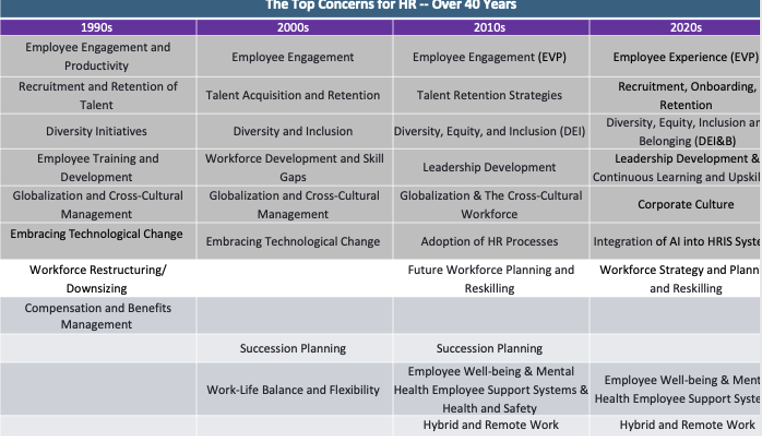It’s that time of year again when predictions for Human Resources (HR) priorities emerge, with experts all over the Internet eagerly outlining what they believe will be the critical focus areas for 2025. A review of these predictions recalls Yogi Berra’s witty observation; it often feels like deja vu all over again.
The same promises about strategic transformation and impact resurface annually, leaving skeptics questioning why HR has not lived up to the revolutionary change it often promises. This skepticism is not unfounded, and examining it through the perspective of history offers critical insights and a starting point.
An intriguing pattern emerges as we analyze the evolution of Human Resources (HR) concerns over the decades. Many of the issues identified in the 1990s remain relevant today. This raises questions about why challenges such as diversity, training and development, and technological adaptation persist despite decades of attention and effort. Understanding these enduring issues requires dissecting the barriers HR has faced in effectively addressing them. The following four issues have remained the lingering HR priorities for 40-plus years. But before reviewing what is considered new yet the same old issues, let us look at it from a historical perspective.
2005 – Fast Company
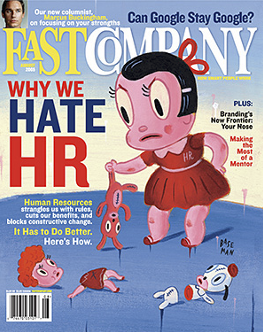 Back in 2005, Fast Company published “Why We Hate HR,” an article that HR leaders either embraced or loathed. The article articulated deep-seeded frustrations with the function, accusing HR of being out of touch with the real needs of businesses and employees alike. While some of the issues raised have been addressed over the years, several points remain pertinent:
Back in 2005, Fast Company published “Why We Hate HR,” an article that HR leaders either embraced or loathed. The article articulated deep-seeded frustrations with the function, accusing HR of being out of touch with the real needs of businesses and employees alike. While some of the issues raised have been addressed over the years, several points remain pertinent:
1. Lack of Strategic Insight: HR is often criticized for not understanding the core business. The disconnect between HR practices and business strategy can prevent the department from making informed decisions that provide real value. HR is often seen as performative more than necessary.
2. Focus on Process Over People: Despite HR being about ‘human’ resources, the focus frequently drifts towards rigid adherence to processes and bureaucracy. This often results in losing the personal touch needed to manage and inspire human capital.
3. Inadequate Training and Development: Fast Company highlighted the lack of adequate training for HR professionals to develop skills beyond administrative capabilities. This shortfall remains a roadblock today in transitioning HR into a proactive strategic unit.
From the perspective of 20 years ago, the HR priorities forecasted for 2025 remain mostly the same, with some updated phrasing. Why?
Modern-Day Challenges
In today’s context, these criticisms have evolved but still linger. The pandemic forced businesses to reconsider employee wellbeing, remote work, and digital engagement—areas presumably within HR’s domain. Yet, the impact of HR on these fronts has often been inconsistent.
1. Technology Integration: Despite advancements, HR struggles with harnessing technology to drive engagement and productivity. Many HR systems remain used primarily for administrative rather than strategic purposes.
2. Diversity and Inclusion: While efforts have increased, studies show that many organizations still face challenges in implementing effective diversity and inclusion strategies that are not just box-ticking exercises.
3. Employee Experience and Wellness: Companies widely recognize the importance of employee experience, yet HR departments often find themselves lagging or delivering underwhelming programs that fail to resonate with the workforce.
The Gap Remains: Today’s Perspective
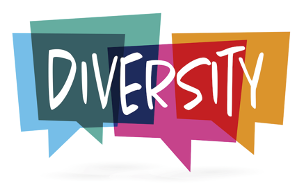 1. Diversity: The Challenge Remains
1. Diversity: The Challenge Remains
Diversity and Inclusion (D&I) is a persistent challenge and has evolved to Diversity, Equity, Inclusion and Belonging (DEI&B)
Historical Perspective: In the 1990s, diversity initiatives began to gain traction as organizations recognized the benefits of diverse workforces. The approach often lacked depth, focusing on quotas rather than genuine inclusion. But it was a genuine effort and recognition of the benefits of diversity.
Current Situation: Diversity, Equity, Inclusion, and (recently added) Belonging (DEIB) programs continue to bolster corporate agendas, yet progress remains slow and uneven. Factors contributing to this stagnation include:
Long-standing employee and institutional bias remain persistent and deeply entrenched, coupled with the influences of today’s political landscape.
Lack of Accountability: Organizations often lack enforcement mechanisms for DEIB policies. While HR leaders set annual DEIB goals, the ownership of DEIB needs to live with all members of the C-Suite, and that is generally not happening.
Surface-Level Initiatives: Consequently, “programs” emphasize diversity without fostering true inclusion, leading to tokenism rather than transformative change. In some cases, these programs intended to unite people have had counterintuitive outcomes. People feel the efforts for DEI&B are performative and “phony,” and the backlash has become increasingly prevalent.
In the last few years, many DEI&B leaders feel they have the right to associate those who are not of a visible minority as colonialists and capitalists, only pushing people apart and not bringing them together, further complicating progress.
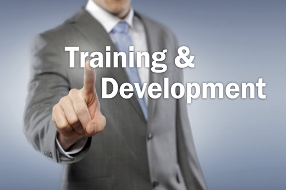 2. Training and Development: An Ongoing Priority
2. Training and Development: An Ongoing Priority
Historical Perspective: Employee training and development emerged as a top concern in the 1990s with the recognition that a skilled workforce is critical to maintaining a competitive advantage. However, consistent investment and commitment have varied.
Current Situation: The need for training and development has only intensified with technological advances and shifting workforce demands.
The ongoing challenges include:
Resource Constraints: There remains an inconsistency between the concerns that CEOs have lamented for the past few decades and their actual behaviours and actions to address them. On one hand, they worry about future leaders coming from within the organization, but they don’t put the proper resources or time into robust leadership programs. As a result, employee development in general and, more specifically, in leadership development lacks sufficient focus. The short-term impact of not having development opportunities has led to high numbers of qualified employees voluntarily leaving for another company that offers development opportunities. In the longer run, the future leadership needed to sustain and grow the organization will remain a cause for the CEO to stay up at night.
Evolving Skill Requirements: Rapid technological and market changes make keeping training programs current and relevant difficult. With the recent focus on reskilling many have moved away from developing leadership behaviours and building emotional intelligence (EQ) in favour of the focus on reskilling.
 3. Employee Engagement and Experience: An Evergreen Concern
3. Employee Engagement and Experience: An Evergreen Concern
Historical Perspective: Since the 1990s, enhancing employee engagement has been crucial, framed originally as building productivity and later encompassing holistic employee experience.
Current Situation: Employee engagement has transformed into an Employee Value Proposition (EVP) strategic imperative, focusing on the employee experience before one can build employee engagement.
The ongoing challenges include:
Changing Workforce Dynamics: The rise of remote and hybrid work models adds complexity to maintaining engagement.
Demographic Shifts: Millennials and Generation Z have arrived at work, experiencing the world they grew up in very differently than previous generations at work. Their different life experiences result in different workplace expectations, such as purpose-driven work and flexibility.
Technological Integration: Balancing technology use with personal connection is a delicate act.
 4. Technological Change and Integration
4. Technological Change and Integration
Historical Perspective: In the 1990s, the dawn of the digital age called for HR to adapt processes and systems to new technologies—an evolution that has continued unabated.
Current Situation: AI and increasingly sophisticated HR Information Systems (HRIS) now promise to transform HR functions fundamentally.
The ongoing challenges include:
Resistance to Change: Organizations and employees may resist adopting new technologies due to fears of obsolescence or redundancy, or they are concerned about privacy or AI that is not yet sophisticated enough to understand human nature.
Implementation Gaps: Integrating AI and technology effectively requires significant investment in reskilling and change management, which some organizations are unwilling or unable to undertake. Yet, AI is seen by many in HR as a way of doing things faster and answering the struggle of having to do more with fewer people. The results have not proven to be consistently helpful. This raises the question of whether HR is rushing to adopt AI as the newest shiny object before it is ready for integration into areas of Talent Management, such as making shortlists of candidates accurately, suggesting development plans identifying who should and should not be promoted, or simply scheduling staff.
Bridging the Gap
To bridge the persistent gap between the promise and reality of HR’s impact so that the lingering concerns don’t seep into the future, a comprehensive approach is needed:
- Investment in HR’s Strategic Capability: Equip HR professionals with business acumen and strategic insight. This involves training and integrating HR into organizations’ core decision-making processes.
- Reimagining Employee Engagement: Shift from a bureaucratic approach to a more dynamic and individualized strategy that considers employee needs, desires, and potential contributions. Living the company’s authentic, current values and focusing the employee experience based on everyone living the values.
- Advanced Analytics: Use data analytics to understand workforce trends, predict possible future needs, and inform strategic HR and business planning. Ensure both align with the company’s values and move toward its vision or purpose.
Conclusion
The longevity of these HR concerns highlights a crucial insight: while the vocabulary and urgency of HR issues have evolved, fundamental structural, societal, and focus on the bottom line over people are barriers that continue to hinder progress. To transcend these challenges, HR must champion deep-rooted organizational alignment with the values and purpose of the company. This means embracing a partnership of accountability and ownership with the CEO and CFO.
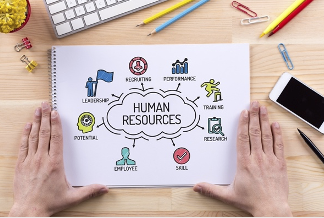 A holistic approach that aligns HR strategies with broader business goals, backed by comprehensive support from leadership, is imperative. CEOs and CFOs must become talent-driven leaders who are deeply involved in developing and managing talent. This includes personally taking ownership and engaging in leading diversity initiatives, recruitment, people development, and retention. Only then can these persistent predictions turn into real, transformative impacts, finally breaking the cycle of ubiquitous HR challenges.
A holistic approach that aligns HR strategies with broader business goals, backed by comprehensive support from leadership, is imperative. CEOs and CFOs must become talent-driven leaders who are deeply involved in developing and managing talent. This includes personally taking ownership and engaging in leading diversity initiatives, recruitment, people development, and retention. Only then can these persistent predictions turn into real, transformative impacts, finally breaking the cycle of ubiquitous HR challenges.
The challenge to HR, Talent Management, Leadership, and Development is: What will make this year different from all other years, moving HR’s priorities past being stuck in a holding pattern?
2025—it’s here. How will we adapt and take advantage of the benefits of more data insights, such as using the time freed up by having the data to focus elsewhere? It is not giving us ‘more time’; it is giving us the capability to invest in our priorities so we don’t continue to make the excuse that we don’t have enough time.
 Now is your turn to contribute your perspective on the discussion on LINKEDIN
Now is your turn to contribute your perspective on the discussion on LINKEDIN
David Cohen is completing his second book on how to hire for fit to values/culture. His first book is called The Talent Edge. He has conducted workshops globally on Structured Behavioural Interviewing. For more information on the workshop, please contact DAVID.
 DS Cohen & Associates
DS Cohen & Associates